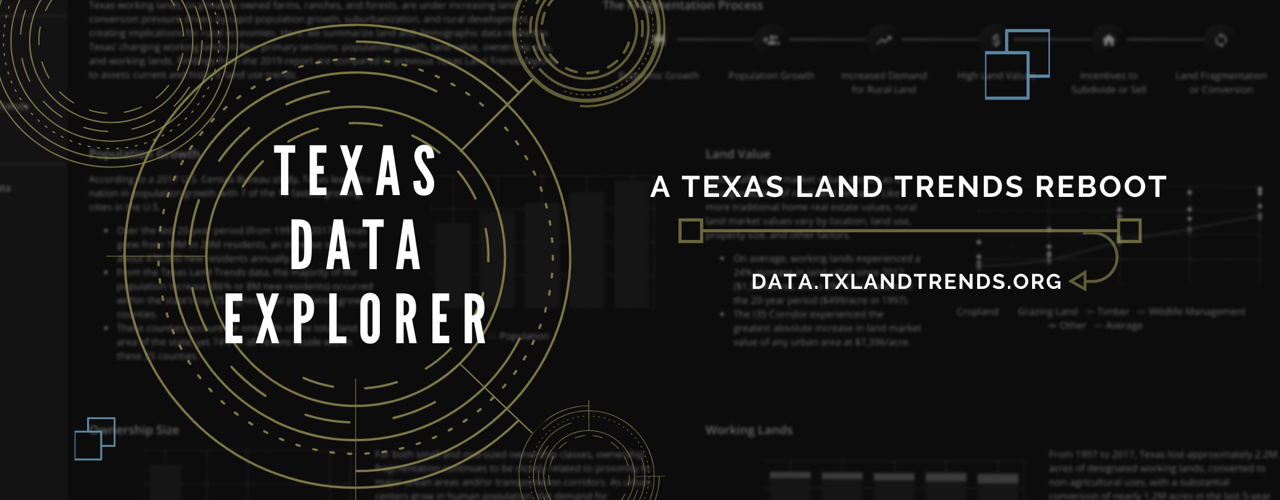

Reboot: The Texas Land Trends Data Explorer
In Texas, rural lands define our state’s identity. Whether it be for the agricultural products produced, natural resources and wildlife habitat maintained, or expanses of wide-open spaces left untouched for their intrinsic beauty, our state’s undeveloped acreage plays a crucial role in continuing our proud rural land legacy. Rural land-use changes often go unnoticed to the majority of the state population (over 80%), who reside in concentrated urban areas. Implications of change on rural lands, however, are far-reaching—affecting the state’s rural economies, conservation of water and other natural resources, as well as the nation’s food security and military training capabilities, to name a few.
Over the past two decades, our geospatial team has been monitoring the changes and trends occurring on privately-owned farms, ranches and forests—also known as rural working lands. Under the Texas Land Trends project, informative reports have been developed over the years to empower public and private decision-makers with the information needed to plan for the conservation of these vital working lands. The latest iteration of the Texas Land Trends report series described key findings of changes in land use, ownership size, and property market values of rural working lands alongside statewide population trends from 1997 to 2017. These metrics provide valuable insight for examining drivers of land-use change, such as motivations for land ownership consolidation and fragmentation, and its long-term impacts, like fragmentation of wildlife habitats and regional land management challenges.
A unique component to this effort is the detailed curation and combination of statewide datasets, derived from the Texas Comptroller of Public Accounts, the U.S. Department of Agriculture’s National Agricultural Statistics Service Census of Agriculture, and the Texas Department of State Health Services. Public usability and access to this data has been a cornerstone of this long-standing effort, promoting the creation of the Data Explorer tool, which was first launched in 2015. Recently, this interactive visualization tool was revamped to include the latest land trends data and expanded tool options for data queries and comparisons. Users can explore specific areas of interest (e.g., counties or ecoregions) or view statewide trends, with results presented through tables, charts, graphs, and maps alongside informative text to help explain common trends. This web tool allows users to interact with the data like never before, including the option to directly download results.
Texas Land Trends is a critically important data source for policymakers, conservation organizations, state and federal agencies, and residents to visualize our changing working land base in Texas, and to provide valuable information on rural land concerns. Through the Data Explorer tool and other Land Trends products, the Texas Land Trends project continues to increase public knowledge of trends occurring across the landscape, aiming to better inform and shape the future of our state’s most valuable resource—land.
Learn More
Texas Land Trends
Informing private and public decision-makers about the status and trends of our state’s working lands










